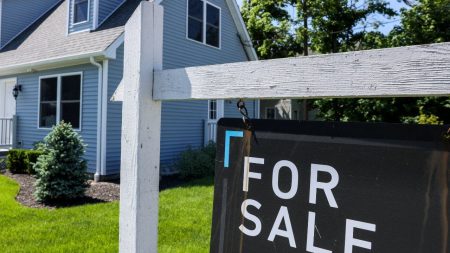It is often said that the interest on home mortgages is “front end-loaded”, implying that the way lenders charge interest is both unfair and self-serving – possibly even sinister. The following statement is typical.
“Did you know that on your typical 30-year mortgage, it takes approximately 21 years just to pay down less than half of the principal of your loan?
The Mortgage industry’s big secret has been kept away from the public since the Roosevelt administration. This little known secret has been taking you (and every other homeowner) for a very costly ride. Your 6% LOW INTEREST MORTGAGE IS REALLY costing you upwards of 60% or more!
You might be asking how you could possibly be paying THAT much without knowing it? It is because ALL mortgages are front end loaded, meaning you’re paying off the interest first. So during all of those first years, you aren’t paying down the principle. Instead, you’re buying the banker a new Mercedes.”
Lets begin with the factual foundation for this position, which is not in dispute. The standard mortgage contract calls for full amortization over the term with equal monthly payments of principal and interest. For example, a $100,000 loan at 6.875% (the lowest rate provided by lenders on my mortgage shopping website today) for 30 years has a payment of $656.93. That payment, if made every month for 30 years, will pay off the mortgage.
A necessary consequence of full amortization with equal monthly payments is that the composition of the payment between interest and principal changes over time. In the early years, the payment is mostly interest, in the later years, it is mostly principal. At 6.875%, it does indeed take around 22 and 1/2 years to pay down the balance of the $100,000 loan to $50,000. This is the factual foundation of the front-end loading argument.
The edifice built on this foundation, however, is entirely erroneous. Lenders collect exactly the interest to which they are entitled throughout the life of the loan. The interest collected is based strictly on the amount owed them. In month 1, the interest payment is $572 because the lender owes $100,000, in month 260 the interest payment is $288 because at that point the lender is owed approximately $50,000.
If two 6.875% loans are made at the same time, one for $100,000 and one for $50,000, it is obvious that the interest due on the first will be twice as large as that on the second. But, the same is true of a single 6.875% loan on which the balance is $100,000 at one point in time, and $50,000 at a later point.
If large interest payments in the early years really generated excess profits for lenders, they would prefer 30-year to 15-year mortgages, because interest payments on the 15 decline much more rapidly. They should therefore charge higher rates on 15s. In fact, they charge lower rates on 15s.
Similarly, if lenders made extra profits from the high interest payments in the early years of a 30-year loan, they would make higher profits on a 40-year, which doesn’t pay down the balance to half of the original balance for 30 years. Because they are more profitable, lenders should charge lower rates on 40s. In fact, they charge higher rates on 40s.
In other words, the way that lenders price loans is just the opposite of what we would expect if interest was front-end loaded. Lenders actually prefer shorter term mortgages because their money turns over faster, which reduces their exposure to rising interest rates, and the more rapid pay-down of the balance reduces the risk of loss from default. Mortgage lenders have enough to answer for without saddling them with a charge that is wholly bogus.
The fixed monthly payment fully amortizing mortgage, which is the basis of the front-end loading argument, was really designed to meet the needs of borrowers. Consider the alternative ways of paying off the $100,000 loan referred to earlier. One way, which was very common during the 1920s, was for borrowers to pay interest only until the end of the term, at which point they had to pay the entire balance. If they could not refinance, which was frequently the case during the 1930s, the alternative was usually foreclosure.
Another way to pay off the balance is to make equal monthly principal payments, in addition to interest. For a long time, this was the method used in New Zealand. In my example, this would require a principal payment of $100,000/360, or $277.78 a month. In the first month, interest would be $572.92, making the total payment $850.70, as compared to $656.93 on the US version (that’s a 29% higher payment). While the payment using this approach would decline over time, the borrower’s ability to afford a given-priced house would be reduced, which is why New Zealand replaced it with the same fully amortizing version used in the US .
As far as I can determine, the fully amortizing mortgage with equal monthly payments was developed by our early building societies, which were mutual institutions and the forerunners of modern savings and loan associations. In 1934, the newly-created FHA declared that all FHA-insured mortgages had to have this structure. Its purpose was to make it easy for borrowers to budget, while allowing for systematic (if slow) reduction in the balance. Within a few years, the fully amortizing mortgage with equal monthly payments had become the standard for the industry. The planners at FHA would have been amused by the thought that their mortgage concept was designed to make lenders rich.
One final note: mortgage borrowers in the US are free to reduce the amount of interest they pay at any time – by making extra payments. Doing so reduces the loan balance and hence the portion of all future payments that are interest. Readers can use my free mortgage payoff calculator to see how extra payments affects when their loan will pay off and how much interest they will save.
Read the full article here















